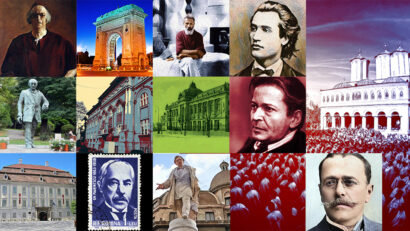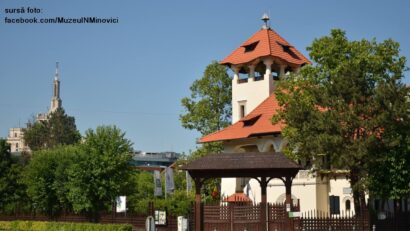The history of schnapps in Romania
Schnapps is a clear, strong alcoholic drink, typical of the Romanian space.

Christine Leșcu, 05.01.2018, 14:12
In the depth of winter, on Christmas Eve or the New Year’s Eve, Romanians usually drink ţuica with their meals, that is a type of schnapps. This strong alcoholic drink is typical of the Romanian space, just as cognac is typical of France and whiskey of Ireland and Scotland. Although the consumption and preparation of schnapps goes back to times immemorial, historians managed to trace several landmarks along the ages, when this drink was very appreciated by peasants and noblemen alike.
Radu Lungu is the author of the book “The Story of Schnapps” published by the Paideia publishers. Here he is next with details: “The first pieces of information about distillation come from Transylvania, from the Saxon villages. Schnapps is an alcoholic drink obtained through the distillation of fermented fruits. In those areas, pharmacists used to distill alcohol to make medicines. The first evidence of this dates to the 14th century and was identified in the areas of Sibiu, Cluj and especially Brasov. In Transylvania, the distillation process was repeated two or three times, that is why their schnapps was stronger. In the old kingdom, in Muntenia, in the south, alcohol was distilled only once, up to 37 degrees. All types of fruits were used. Plums were the fruits most frequently used, but people also used apples, pears, cherries, sour cherries, apricots, peaches, quinces and even cereals such as rye. The first mention of plum brandy made in Sălaj county, in the northwest, goes back to 1450 and the first mention of schnapps distillation on the Romanian territory dates to around 1570. It referred to the plum brandy made in Turţ, a locality in Oaş country, where schnapps is distilled twice and measures 50 degrees.”
Schnapps was used for medicinal purposes for a long period of time, especially in villages, where peasants used it as rubbing alcohol. Moreover, an event that occurred in Moldavia and that was later turned into a legend confirms the multiple uses of schnapps. During the rule of Stephen the Great, masons involved in the building of monasteries would be sent barrels of schnapps, which they used for preparing plaster and for mixing colors. We might speculate that masons also used to drink schnapps to make the atmosphere merrier. But drinking schnapps was not only a means to lighten up the mood. It was also a likely way to cause trouble, as revealed by this story which, historian Radu Lungu tells us, goes back to the times when Transylvania was a province of the Hapsburg Empire, and Tsarist Russia and Austria were at war with the Ottoman Empire.
The incident, known in history as the Plum Brandy Battle, took place in the region of Banat, near Caransebes, on September 17, 1788. Radu Lungu: “The 100,000-strong Austrian army set camp near Caransebes. The vanguard, consisting in a hussar contingent, crossed the river Timis to check for Ottoman troops. Having found no signs of Turkish presence, the hussars accepted an offer made by a gypsy group they had encountered there, bought some schnapps and started drinking. Shortly after that, a Hapsburg infantry group also crossed the river. When they saw the party that had just started, the infantrymen asked for alcohol as well. A clash followed, as each side was determined to get more brandy than the other. With the ‘battle’ in full swing, some of the infantrymen shouted in Romanian, ‘The Turks! The Turks!’ which sent the hussars running for their lives, convinced that the Ottoman army was about to attack. This tells us that the Austrian army was made up of troops of various ethnic backgrounds, not all of them speaking German.”
Eventually, the language mix-up and the influence of alcohol led to a slaughter within the Austrian army, so when the Turks actually arrived, two days later, they found no troops to fight against. The diversity of schnapps types and of their names indicates not only the popularity of this beverage on a large geographical area, but also the cultural and ethnic interchanges it has facilitated. The word “horinca,” for instance, which is another term used in Romania for schnapps, comes from the Ukrainian “horilka,” used for low-quality spirits. The root of the Romanian “rachiu” is the Turkish word “raki,” which, in turn, is derived from “araq,” a word which in Arabic refers to a process of condensation. “Palinca,” the typical Transylvanian schnapps, has its name derived from the Hungarian word “palinka,” which in turn comes from the Slavonic “paliti,” meaning “to burn.” Indeed, plum brandy or palinca, especially the variety made in northwestern Transylvania, in Maramures and Satu-Mare, sends a flamethrower down your throat.





























